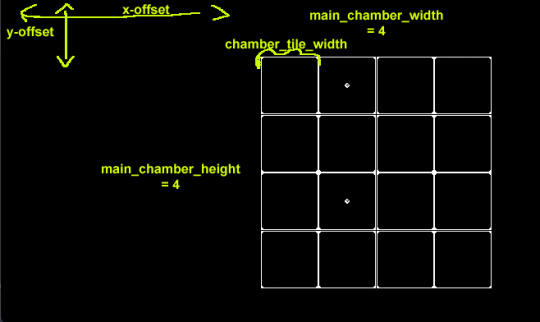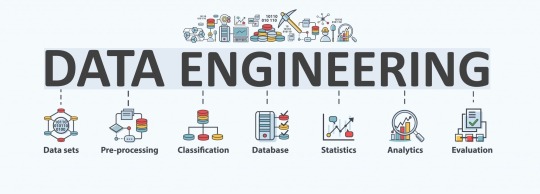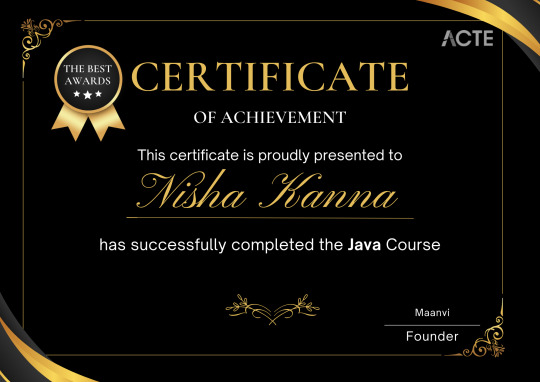#How to learn java fast
Explore tagged Tumblr posts
Text
Holoatypical: Dev Log 1

Number one in what's hopefully going to be a pretty long series of updates!
So, first things first: Godot rocks. I've been using it for two weeks now, having switched from GameMaker (and before that, Twine, and before that, Java and JavaScript), and Godot does so much of the heavy lifting for you. It genuinely feels like an engine that's designed for making games. Unlike GameMaker, which was like wading through molasses every step of the way, while some sort of molasses shark is biting at your ankles. And I've coded in JavaScript.
Second, let me show you what I've been up to!

As you can see, I'm working on a prototype to try out the merging mechanic. It's got some (ha) bugs, and dragging things could be smoother, but the critters do actually snap into the grid and merge now, and I'm very pleased with that.
This chamber you see here is going to be the lab. As it's planned right now, the player will have infinite initial building blocks (eggs, spores, seeds...), which merge into different critters depending on environmental variables (artificially set in the lab) and on which other specimens are currently in the chamber. The challenge is to figure out the right parameters. I have no idea how big the chamber needs to be for that, but that's not really an issue, because...
This isn't so much a prototype as I'm just straight up building the foundations for a game, which is why it's taking me so long. The grid you see here is controlled with a few variables, and everything is flexible enough that I can simply change the grid size during playtesting and it still works.

The tile grid is an array of arrays, filled with slot nodes that I instantiate at runtime. Is this the best way to learn a new program and language? Haha. Who knows.

Specimens have a sprite sheet with all their stages on it, and when a critter levels up, the part that's visible to the player just needs to be shifted 64 pixels to the right.

That's x starting point, which is the specimen stage/level times 64, then y starting point, width, and height. Fun! So easy!!
As to the sprite sheet, I'm going against common advice and making these big. The 1bit style is super fast to do, and in my opinion, a certain level of detail is important to make the sprites look like anything. I'm moreso playing with the look than really wanting to make a retro game.

This sheet only took me an evening! I'm enjoying it because it really forces you to abstract the shape and focus on what's most important about the critter. (This is a style test - I haven't decided yet how weird I want to go with these vs making them look more natural.)
Next up will be ironing out the kinks, making an egg dispenser and a specimen incinerator so the field can be filled up and emptied, coming up with a few more specimen, and then going into play testing.
But in the next dev log, you're probably going to hear way more about the story and the characters. I am eyeing a visual novel extension for Godot (dialogic), which, if it does what I think it does, is going to take a lot of work off my hands and only leaves me with writing the actual dialogue, which I've already started on.
@tragedycoded @badscientist @curiouscalembour @writingrosesonneptune @gioiaalbanoart @monstrify @cowboybrunch @tsunamiscale @marlowethelibrarian
Was this format interesting? Less code? More code? Anything you specifically want me to talk about in this process? Let me know!
19 notes
·
View notes
Note
Can I ask about your work experience, like what languages you work with and what kinds of projects you do? What is it that makes you want to take up a trade instead?
Hi! I've been a Java backend developer (mostly, I've done some front end stuff with Angular and Typescript, which I loathe) for 6 years. I've mostly worked in big companies, done contractor work (which I didn't like, WAY too demanding, REALLY long hours) and now I'm in a nondescript company, I took this job bc I was unemployed and I needed an income fast, but I don't like it.
I stress and get frustrated very quickly and there are many things that you have to be updated all the time, you can't just be a 'Java developer', you have to keep learning stuff that is insane and the pace changes all the time. You're surveilled all the time, not just with how many hours you put in, but also how much you use the computer, what programs you use, for how long, etc. It's very micromanaging-oriented. Some might not experience this, but I've always worked with these conditions, though lately even more monitored. I don't like it, makes me feel like I'm not working enough. You get the idea.
Currently I'm looking for a position in a better paid place, but the process of interviews is long and tiring, they can be over 2 hours long where they test your technical knowledge, sometimes with live coding, which makes me very very nervous (I don't like others seeing me coding, I hate it), and 99% of the times the interviewers are smug, sardonic men that will try to make you feel like you're dumb. This doesn't happen to my friends that also are developers, so I think it might be because I'm a female in the field. So there's that too. I'm thinking of changing paths because, even though most people might think this is a cushy job where you can work from home (that's a big plus, I don't complain about that, I love staying at home and I'm not very good at socializing duh I'm a software developer lol), you have to wreck your brain and you work long hours, sometimes up to 10 a day, specially when something breaks or you work in a shitty company, as is the case rn.
I wanna try doing something with my hands, something where I can see the results of my work in real life and that impacts others, and tbh there aren't many women electricians (I personally don't know any), so while it might be hard at first to get a clientele, I think there could be a market for it, bc women might feel safer with a woman in their house instead of a man. I want to try learning how to be a gas fitter and maybe also plumbing, so I can expand my trade and not just be an electrician. I found some 2 year courses at different universities so instead of finishing my degree in Software Engineering I'll go for that.
Hope that helps!
5 notes
·
View notes
Text
Mastering Data Structures: A Comprehensive Course for Beginners
Data structures are one of the foundational concepts in computer science and software development. Mastering data structures is essential for anyone looking to pursue a career in programming, software engineering, or computer science. This article will explore the importance of a Data Structure Course, what it covers, and how it can help you excel in coding challenges and interviews.
1. What Is a Data Structure Course?
A Data Structure Course teaches students about the various ways data can be organized, stored, and manipulated efficiently. These structures are crucial for solving complex problems and optimizing the performance of applications. The course generally covers theoretical concepts along with practical applications using programming languages like C++, Java, or Python.
By the end of the course, students will gain proficiency in selecting the right data structure for different problem types, improving their problem-solving abilities.
2. Why Take a Data Structure Course?
Learning data structures is vital for both beginners and experienced developers. Here are some key reasons to enroll in a Data Structure Course:
a) Essential for Coding Interviews
Companies like Google, Amazon, and Facebook focus heavily on data structures in their coding interviews. A solid understanding of data structures is essential to pass these interviews successfully. Employers assess your problem-solving skills, and your knowledge of data structures can set you apart from other candidates.
b) Improves Problem-Solving Skills
With the right data structure knowledge, you can solve real-world problems more efficiently. A well-designed data structure leads to faster algorithms, which is critical when handling large datasets or working on performance-sensitive applications.
c) Boosts Programming Competency
A good grasp of data structures makes coding more intuitive. Whether you are developing an app, building a website, or working on software tools, understanding how to work with different data structures will help you write clean and efficient code.
3. Key Topics Covered in a Data Structure Course
A Data Structure Course typically spans a range of topics designed to teach students how to use and implement different structures. Below are some key topics you will encounter:
a) Arrays and Linked Lists
Arrays are one of the most basic data structures. A Data Structure Course will teach you how to use arrays for storing and accessing data in contiguous memory locations. Linked lists, on the other hand, involve nodes that hold data and pointers to the next node. Students will learn the differences, advantages, and disadvantages of both structures.
b) Stacks and Queues
Stacks and queues are fundamental data structures used to store and retrieve data in a specific order. A Data Structure Course will cover the LIFO (Last In, First Out) principle for stacks and FIFO (First In, First Out) for queues, explaining their use in various algorithms and applications like web browsers and task scheduling.
c) Trees and Graphs
Trees and graphs are hierarchical structures used in organizing data. A Data Structure Course teaches how trees, such as binary trees, binary search trees (BST), and AVL trees, are used in organizing hierarchical data. Graphs are important for representing relationships between entities, such as in social networks, and are used in algorithms like Dijkstra's and BFS/DFS.
d) Hashing
Hashing is a technique used to convert a given key into an index in an array. A Data Structure Course will cover hash tables, hash maps, and collision resolution techniques, which are crucial for fast data retrieval and manipulation.
e) Sorting and Searching Algorithms
Sorting and searching are essential operations for working with data. A Data Structure Course provides a detailed study of algorithms like quicksort, merge sort, and binary search. Understanding these algorithms and how they interact with data structures can help you optimize solutions to various problems.
4. Practical Benefits of Enrolling in a Data Structure Course
a) Hands-on Experience
A Data Structure Course typically includes plenty of coding exercises, allowing students to implement data structures and algorithms from scratch. This hands-on experience is invaluable when applying concepts to real-world problems.
b) Critical Thinking and Efficiency
Data structures are all about optimizing efficiency. By learning the most effective ways to store and manipulate data, students improve their critical thinking skills, which are essential in programming. Selecting the right data structure for a problem can drastically reduce time and space complexity.
c) Better Understanding of Memory Management
Understanding how data is stored and accessed in memory is crucial for writing efficient code. A Data Structure Course will help you gain insights into memory management, pointers, and references, which are important concepts, especially in languages like C and C++.
5. Best Programming Languages for Data Structure Courses
While many programming languages can be used to teach data structures, some are particularly well-suited due to their memory management capabilities and ease of implementation. Some popular programming languages used in Data Structure Courses include:
C++: Offers low-level memory management and is perfect for teaching data structures.
Java: Widely used for teaching object-oriented principles and offers a rich set of libraries for implementing data structures.
Python: Known for its simplicity and ease of use, Python is great for beginners, though it may not offer the same level of control over memory as C++.
6. How to Choose the Right Data Structure Course?
Selecting the right Data Structure Course depends on several factors such as your learning goals, background, and preferred learning style. Consider the following when choosing:
a) Course Content and Curriculum
Make sure the course covers the topics you are interested in and aligns with your learning objectives. A comprehensive Data Structure Course should provide a balance between theory and practical coding exercises.
b) Instructor Expertise
Look for courses taught by experienced instructors who have a solid background in computer science and software development.
c) Course Reviews and Ratings
Reviews and ratings from other students can provide valuable insights into the course’s quality and how well it prepares you for real-world applications.
7. Conclusion: Unlock Your Coding Potential with a Data Structure Course
In conclusion, a Data Structure Course is an essential investment for anyone serious about pursuing a career in software development or computer science. It equips you with the tools and skills to optimize your code, solve problems more efficiently, and excel in technical interviews. Whether you're a beginner or looking to strengthen your existing knowledge, a well-structured course can help you unlock your full coding potential.
By mastering data structures, you are not only preparing for interviews but also becoming a better programmer who can tackle complex challenges with ease.
3 notes
·
View notes
Text
So I made an app for PROTO. Written in Kotlin and runs on Android.
Next, I want to upgrade it with a controller mode. It should work so so I simply plug a wired xbox controller into my phone with a USB OTG adaptor… and bam, the phone does all the complex wireless communication and is a battery. Meaning that besides the controller, you only need the app and… any phone. Which anyone is rather likely to have Done.
Now THAT is convenient!
( Warning, the rest of the post turned into... a few rants. ) Why Android? Well I dislike Android less than IOS
So it is it better to be crawling in front of the alter of "We are making the apocalypse happen" Google than "5 Chinese child workers died while you read this" Apple?
Not much…
I really should which over to a better open source Linux distribution… But I do not have the willpower to research which one... So on Android I stay.
Kotlin is meant to be "Java, but better/more modern/More functional programming style" (Everyone realized a few years back that the 100% Object oriented programming paradigme is stupid as hell. And we already knew that about the functional programming paradigme. The best is a mix of everything, each used when it is the best option.) And for the most part, it succeeds. Java/Kotlin compiles its code down to "bytecode", which is essentially assembler but for the Java virtual machine. The virtual machine then runs the program. Like how javascript have the browser run it instead of compiling it to the specific machine your want it to run on… It makes them easy to port…
Except in the case of Kotlin on Android... there is not a snowflakes chance in hell that you can take your entire codebase and just run it on another linux distribution, Windows or IOS…
So... you do it for the performance right? The upside of compiling directly to the machine is that it does not waste power on middle management layers… This is why C and C++ are so fast!
Except… Android is… Clunky… It relies on design ideas that require EVERY SINGLE PROGRAM AND APP ON YOUR PHONE to behave nicely (Lots of "This system only works if every single app uses it sparingly and do not screw each-other over" paradigms .). And many distributions from Motorola like mine for example comes with software YOUR ARE NOT ALLOWED TO UNINSTALL... meaning that software on your phone is ALWAYS behaving badly. Because not a single person actually owns an Android phone. You own a brick of electronics that is worthless without its OS, and google does not sell that to you or even gift it to you. You are renting it for free, forever. Same with Motorola which added a few extra modifications onto Googles Android and then gave it to me.
That way, google does not have to give any rights to its costumers. So I cannot completely control what my phone does. Because it is not my phone. It is Googles phone.
That I am allowed to use. By the good graces of our corporate god emperors
"Moose stares blankly into space trying to stop being permanently angry at hoe everyone is choosing to run the world"
… Ok that turned dark… Anywho. TLDR There is a better option for 95% of apps (Which is "A GUI that interfaces with a database") "Just write a single HTML document with internal CSS and Javascript" Usually simpler, MUCH easier and smaller… And now your app works on any computer with a browser. Meaning all of them…
I made a GUI for my parents recently that works exactly like that. Soo this post:
It was frankly a mistake of me to learn Kotlin… Even more so since It is a… awful language… Clearly good ideas then ruined by marketing department people yelling "SUPPORT EVERYTHING! AND USE ALL THE BUZZWORD TECHNOLOGY! Like… If your language FORCES you to use exceptions for normal runtime behavior "Stares at CancellationException"... dear god that is horrible...
Made EVEN WORSE by being a really complicated way to re-invent the GOTO expression… You know... The thing every programmer is taught will eat your feet if you ever think about using it because it is SO dangerous, and SO bad form to use it? Yeah. It is that, hidden is a COMPLEATLY WRONG WAY to use exceptions…
goodie… I swear to Christ, every page or two of my Kotlin notes have me ranting how I learned how something works, and that it is terrible... Blaaa. But anyway now that I know it, I try to keep it fresh in my mind and use it from time to time. Might as well. It IS possible to run certain things more effective than a web page, and you can work much more directly with the file system. It is... hard-ish to get a webpage to "load" a file automatically... But believe me, it is good that this is the case.
Anywho. How does the app work and what is the next version going to do?
PROTO is meant to be a platform I test OTHER systems on, so he is optimized for simplicity. So how you control him is sending a HTTP 1.1 message of type Text/Plain… (This is a VERY fancy sounding way of saying "A string" in network speak). The string is 6 comma separated numbers. Linear movement XYZ and angular movement XYZ.
The app is simply 5 buttons that each sends a HTTP PUT request with fixed values. Specifically 0.5/-0.5 meter/second linear (Drive back or forward) 0.2/-0.2 radians/second angular (Turn right or turn left) Or all 0 for stop
(Yes, I just formatted normal text as code to make it more readable... I think I might be more infected by programming so much than I thought...)
Aaaaaanywho. That must be enough ranting. Time to make the app
31 notes
·
View notes
Text
Best IT Courses In Bhubaneswar:- seeree services pvt ltd.
Introduction:- seeree is one of the best IT training institute and Software industry, features completely Industrial training on Python , PHP , .NET , C Programming,Java , IOT , AI , GD PI , ORACLE and ALL CERTIFICATION COURSES as well as provides seminar,cultural activity and jobs
Courses we provided:- 1) Java Fullstack 2) Python Fullstack 3) PHP Fullstack 4) Preplacement Training & Sp. Eng 5) .NET Fulstack 6) SEO/Digital Marketing 7) SAP 8) MERN 9) Software Testing 10)Data Analyst 11)Data Science 12)Data Engineering 13)PGDCA 14)Tally 15)Graphics Design
Course1:- Java Fullstack

A Class in Java is where we teach objects how to behave. Education at seeree means way to success. The way of teaching by corporate trainers will bloom your career. We have the best java training classes in Bhubaneswar. 100% Placement Support. Job Support Post Training. This course will give you a firm foundation in Java, commonly used programming language. Java technology is wide used currently. Java is a programming language and it is a platform. Hardware or software environment in which a program runs, known as a platform. Since Java has its own Runtime Environment (JRE) and API, it is called platform. Java programming language is designed to meet the challenges of application development in the context of heterogeneous, network-wide distributed environment. Java is an object-oriented programming (OOP) language that uses many common elements from other OOP languages, such as C++. Java is a complete platform for software development. Java is suitable for enterprise large scale applications.]
Course2:- Python Fullstack

Seeree offers best python course in Bhubaneswar with 100% job assurance and low fee. Learn from real time corporate trainers and experienced faculties. Groom your personality with our faculty. Seeree helps to build confidence in students to give exposure to their skills to the company.
Python is dynamically typed , compiled and interpreted , procedural and object oriented , generalized , general-purpose , platform independent programming language. Python is a high-level, structured, open-source programming language that can be used for a wide variety of programming tasks.
Course3:- PHP Fullstack

seeree is the best training institute which provide PHP Training courses in bhubaneswar and all over odisha We aim the students to learn and grow altogether with the need of IT firms.
PHP is a server scripting language, and a powerful tool for making dynamic and interactive Web pages. PHP is a widely-used, free, and efficient alternative to competitors such as Microsoft's ASP.
Course4:- Preplacement Training & Sp. Eng

Welcome to SEEREE Institute, where excellence meets opportunity. At SEEREE, we are dedicated to providing a transformative learning experience that empowers students to achieve their goals and contribute to a brighter future.
Our institute offers cutting-edge courses designed to meet the needs of the ever-evolving global landscape. With a team of highly qualified instructors and state-of-the-art facilities, we ensure a supportive and inspiring environment for learning and growth.
Whether you're here to develop new skills, explore innovative fields, or pursue personal and professional success, SEEREE Institute is the perfect place to begin your journey. Thank you for choosing us, and we look forward to being a part of your success story.
Course5:- .NET Fullstack

Seeree offers best .NET course in Bhubaneswar with 100% job assurance and low fee. Learn from real time corporate trainers and experienced faculties. Groom your personality with our faculty. Seeree helps to build confidence in students to give exposure to their skills to the company.
Course6:- SEO/Digital Marketing

In today's fast-paced digital world, businesses thrive on visibility, engagement, and strategic online presence. At SEEREE, we empower you with the skills and knowledge to master the art of Search Engine Optimization (SEO) and Digital Marketing.
Our comprehensive program is designed for beginners and professionals alike, covering everything from keyword research, on-page and off-page SEO, and content marketing, to social media strategies, PPC campaigns, and analytics.
With hands-on training, real-world projects, and guidance from industry experts, we ensure you're equipped to drive measurable results and excel in this dynamic field.
Join us at SEEREE Institute and take the first step towards becoming a leader in the digital marketing landscape!"
Course7:- SAP

SAP refers to Systems, Applications, and Products in Data Processing. Some of the most common subjects covered in these courses include human resource software administration, database management, and business training. Obtaining SAP certification can be done on a stand-alone basis or as part of a degree program.
Course8:- MERN

Seeree offers the best MERN course in Bhubaneswar with 100% job assurance and low fees. Learn from real-time corporate trainers and experienced faculty. Seeree helps students build confidence and gain skills to excel in company roles.
Are you ready to step into the exciting world of web development? At SEEREE, we bring you a comprehensive MERN Stack course that equips you with the skills to build modern, dynamic, and responsive web applications from start to finish.
The MERN Stack—comprising MongoDB, Express.js, React.js, and Node.js—is one of the most sought-after technologies in the web development industry. Our program is designed to help you master each component of the stack, from creating robust backends and managing databases to crafting dynamic frontends and seamless APIs.
Course9:- Software Testing

Seeree offers best Testing course in Bhubaneswar with 100% job assurance and low fee. Learn from real time corporate trainers and experienced faculties. Groom your personality with our faculty. Seeree helps to build confidence in students to give exposure to their skills to the company.
In the fast-paced world of software development, ensuring the quality and reliability of applications is crucial. At SEEREE, we offer a comprehensive Software Testing course designed to equip you with the skills and techniques needed to excel in this essential field.
Our program covers all aspects of software testing, from manual testing fundamentals to advanced automation tools and frameworks like Selenium, JIRA, and TestNG. You’ll learn to identify bugs, write test cases, execute test scripts, and ensure software meets high-quality standards.
With hands-on training, real-world scenarios, and guidance from experienced industry professionals, you’ll be prepared to take on roles like Quality Assurance Engineer, Test Analyst, and Automation Tester.
Join SEEREE Institute and gain the expertise to become a key player in delivering flawless software solutions. Your journey to a rewarding career in software testing starts here!"
Course10:- Data Analyst

Seeree offers the best Data Analyst course in Bhubaneswar with 100% job assurance and affordable fees. Our comprehensive curriculum is designed to cover all aspects of data analysis, from data collection and cleaning to advanced data visualization techniques. Learn from real-time corporate trainers and experienced faculty members who bring industry insights into the classroom. Enhance your analytical skills and boost your career prospects with hands-on projects and real-world case studies. Our faculty also focuses on grooming your personality and soft skills, ensuring you are well-prepared for interviews and workplace environments. Seeree is dedicated to building confidence in students, providing them with the necessary exposure to showcase their skills to top companies in the industry.
Course11:- Data Science

Seeree offers the best Data Science course in Bhubaneswar with 100% job assurance and affordable fees. Our comprehensive curriculum is designed to cover all aspects of data science, from data collection and cleaning to advanced data visualization techniques. Learn from real-time corporate trainers and experienced faculty members who bring industry insights into the classroom. Enhance your analytical skills and boost your career prospects with hands-on projects and real-world case studies. Our faculty also focuses on grooming your personality and soft skills, ensuring you are well-prepared for interviews and workplace environments. Seeree is dedicated to building confidence in students, providing them with the necessary exposure to showcase their skills to top companies in the industry.
Course12:- Data Engineering

In the era of big data, the ability to design, build, and manage scalable data infrastructure is one of the most in-demand skills in the tech industry. At SEEREE, we are proud to offer a comprehensive Data Engineering course that prepares you for a career at the forefront of data-driven innovation.
Our program covers essential topics such as data modeling, ETL processes, data warehousing, cloud platforms, and tools like Apache Spark, Kafka, and Hadoop. You’ll learn how to collect, organize, and transform raw data into actionable insights, enabling businesses to make smarter decisions.
With real-world projects, expert mentorship, and hands-on experience with the latest technologies, we ensure that you are industry-ready. Whether you’re starting fresh or upskilling, this program will empower you to unlock opportunities in the rapidly growing field of data engineering.
Join SEEREE Institute and take the first step toward building the data pipelines that power tomorrow’s technology!"
Course13:- PGDCA

Seeree offers the best MERN course in Bhubaneswar with 100% job assurance and low fees. Learn from real-time corporate trainers and experienced faculty. Seeree helps students build confidence and gain skills to excel in company roles.
In today’s digital age, computer applications are at the heart of every industry, driving innovation and efficiency. At SEEREE Institute, our Post Graduate Diploma in Computer Applications (PGDCA) program is designed to provide you with in-depth knowledge and hands-on skills to excel in the IT world.
This program offers a comprehensive curriculum covering programming languages, database management, web development, software engineering, networking, and more. Whether you aim to enhance your technical expertise or step into a rewarding career in IT, PGDCA at SEEREE equips you with the tools to succeed.
With expert faculty, state-of-the-art labs, and real-world projects, we ensure that you gain practical experience and a strong theoretical foundation. By the end of the program, you’ll be prepared for roles such as software developer, system analyst, IT manager, or database administrator.
Course14:- Tally

Seeree offers the best Tally course in Bhubaneswar with 100% job assurance and low fees. Learn from real-time corporate trainers and experienced faculty. Seeree helps students build confidence and gain skills to excel in company roles.
In today’s business world, efficient financial management is key to success, and Tally is one of the most trusted tools for accounting and financial operations. At SEEREE Institute, we offer a comprehensive Tally course designed to equip you with the skills needed to manage business finances effortlessly.
Our program covers everything from the basics of accounting and bookkeeping to advanced features like GST compliance, inventory management, payroll processing, and generating financial reports. With hands-on training and real-world applications, you’ll gain practical expertise in using Tally effectively for businesses of any scale.
Whether you're a student, a professional, or a business owner, our Tally program is tailored to meet your needs and enhance your career prospects in the fields of accounting and finance.
Course15:- Graphics Design

In the world of creativity and communication, graphic design plays a vital role in bringing ideas to life. At SEEREE Institute, our Graphic Design course is tailored to help you unlock your creative potential and master the art of visual storytelling.
Our program covers a wide range of topics, including design principles, color theory, typography, branding, and user interface design. You’ll gain hands-on experience with industry-standard tools like Adobe Photoshop, Illustrator, and InDesign, enabling you to create stunning visuals for print, digital media, and beyond.
Whether you're an aspiring designer or a professional looking to sharpen your skills, our expert trainers and real-world projects will provide you with the knowledge and confidence to excel in this competitive field.
Join SEEREE Institute and start your journey toward becoming a skilled graphic designer. Let’s design your future together!"
2 notes
·
View notes
Text
Normally I just post about movies but I'm a software engineer by trade so I've got opinions on programming too.
Apparently it's a month of code or something because my dash is filled with people trying to learn Python. And that's great, because Python is a good language with a lot of support and job opportunities. I've just got some scattered thoughts that I thought I'd write down.
Python abstracts a number of useful concepts. It makes it easier to use, but it also means that if you don't understand the concepts then things might go wrong in ways you didn't expect. Memory management and pointer logic is so damn annoying, but you need to understand them. I learned these concepts by learning C++, hopefully there's an easier way these days.
Data structures and algorithms are the bread and butter of any real work (and they're pretty much all that come up in interviews) and they're language agnostic. If you don't know how to traverse a linked list, how to use recursion, what a hash map is for, etc. then you don't really know how to program. You'll pretty much never need to implement any of them from scratch, but you should know when to use them; think of them like building blocks in a Lego set.
Learning a new language is a hell of a lot easier after your first one. Going from Python to Java is mostly just syntax differences. Even "harder" languages like C++ mostly just mean more boilerplate while doing the same things. Learning a new spoken language in is hard, but learning a new programming language is generally closer to learning some new slang or a new accent. Lists in Python are called Vectors in C++, just like how french fries are called chips in London. If you know all the underlying concepts that are common to most programming languages then it's not a huge jump to a new one, at least if you're only doing all the most common stuff. (You will get tripped up by some of the minor differences though. Popping an item off of a stack in Python returns the element, but in Java it returns nothing. You have to read it with Top first. Definitely had a program fail due to that issue).
The above is not true for new paradigms. Python, C++ and Java are all iterative languages. You move to something functional like Haskell and you need a completely different way of thinking. Javascript (not in any way related to Java) has callbacks and I still don't quite have a good handle on them. Hardware languages like VHDL are all synchronous; every line of code in a program runs at the same time! That's a new way of thinking.
Python is stereotyped as a scripting language good only for glue programming or prototypes. It's excellent at those, but I've worked at a number of (successful) startups that all were Python on the backend. Python is robust enough and fast enough to be used for basically anything at this point, except maybe for embedded programming. If you do need the fastest speed possible then you can still drop in some raw C++ for the places you need it (one place I worked at had one very important piece of code in C++ because even milliseconds mattered there, but everything else was Python). The speed differences between Python and C++ are so much smaller these days that you only need them at the scale of the really big companies. It makes sense for Google to use C++ (and they use their own version of it to boot), but any company with less than 100 engineers is probably better off with Python in almost all cases. Honestly thought the best programming language is the one you like, and the one that you're good at.
Design patterns mostly don't matter. They really were only created to make up for language failures of C++; in the original design patterns book 17 of the 23 patterns were just core features of other contemporary languages like LISP. C++ was just really popular while also being kinda bad, so they were necessary. I don't think I've ever once thought about consciously using a design pattern since even before I graduated. Object oriented design is mostly in the same place. You'll use classes because it's a useful way to structure things but multiple inheritance and polymorphism and all the other terms you've learned really don't come into play too often and when they do you use the simplest possible form of them. Code should be simple and easy to understand so make it as simple as possible. As far as inheritance the most I'm willing to do is to have a class with abstract functions (i.e. classes where some functions are empty but are expected to be filled out by the child class) but even then there are usually good alternatives to this.
Related to the above: simple is best. Simple is elegant. If you solve a problem with 4000 lines of code using a bunch of esoteric data structures and language quirks, but someone else did it in 10 then I'll pick the 10. On the other hand a one liner function that requires a lot of unpacking, like a Python function with a bunch of nested lambdas, might be easier to read if you split it up a bit more. Time to read and understand the code is the most important metric, more important than runtime or memory use. You can optimize for the other two later if you have to, but simple has to prevail for the first pass otherwise it's going to be hard for other people to understand. In fact, it'll be hard for you to understand too when you come back to it 3 months later without any context.
Note that I've cut a few things for simplicity. For example: VHDL doesn't quite require every line to run at the same time, but it's still a major paradigm of the language that isn't present in most other languages.
Ok that was a lot to read. I guess I have more to say about programming than I thought. But the core ideas are: Python is pretty good, other languages don't need to be scary, learn your data structures and algorithms and above all keep your code simple and clean.
#programming#python#software engineering#java#java programming#c++#javascript#haskell#VHDL#hardware programming#embedded programming#month of code#design patterns#common lisp#google#data structures#algorithms#hash table#recursion#array#lists#vectors#vector#list#arrays#object oriented programming#functional programming#iterative programming#callbacks
19 notes
·
View notes
Text
Good Code is Boring
Daily Blogs 358 - Oct 28th, 12.024
Something I started to notice and think about, is how much most good code is kinda boring.
Clever Code
Go (or "Golang" for SEO friendliness) is my third or fourth programming language that I learned, and it is somewhat a new paradigm for me.
My first language was Java, famous for its Object-Oriented Programming (OOP) paradigms and features. I learned it for game development, which is somewhat okay with Java, and to be honest, I hardly remember how it was. However, I learned from others how much OOP can get out of control and be a nightmare with inheritance inside inheritance inside inheritance.
And then I learned JavaScript after some years... fucking god. But being honest, in the start JS was a blast, and I still think it is a good language... for the browser. If you start to go outside from the standard vanilla JavaScript, things start to be clever. In an engineering view, the ecosystem is really powerful, things such as JSX and all the frameworks that use it, the compilers for Vue and Svelte, and the whole bundling, and splitting, and transpiling of Rollup, ESBuild, Vite and using TypeScript, to compile a language to another, that will have a build process, all of this, for an interpreted language... it is a marvel of engineering, but it is just too much.
Finally, I learned Rust... which I kinda like it. I didn't really make a big project with it, just a small CLI for manipulating markdown, which was nice and when I found a good solution for converting Markdown AST to NPF it was a big hit of dopamine because it was really elegant. However, nowadays, I do feel like it is having the same problems of JavaScript. Macros are a good feature, but end up being the go-to solution when you simply can't make the code "look pretty"; or having to use a library to anything a little more complex; or having to deal with lifetimes. And if you want to do anything a little more complex "the Rust way", you will easily do head to head with a wall of skill-issues. I still love it and its complexity, and for things like compiler and transpilers it feels like a good shot.
Going Go
This year I started to learn Go (or "Golang" for SEO friendliness), and it has being kinda awesome.
Go is kinda like Python in its learning curve, and it is somewhat like C but without all the needing of handling memory and needing to create complex data structured from scratch. And I have never really loved it, but never really hated it, since it is mostly just boring and simple.
There are no macros or magic syntax. No pattern matching on types, since you can just use a switch statement. You don't have to worry a lot about packages, since the standard library will cover you up to 80% of features. If you need a package, you don't need to worry about a centralized registry to upload and the security vulnerability of a single failure point, all packages are just Git repositories that you import and that's it. And no file management, since it just uses the file system for packages and imports.
And it feels like Go pretty much made all the obvious decisions that make sense, and you mostly never question or care about them, because they don't annoy you. The syntax doesn't get into your way. And in the end you just end up comparing to other languages' features, saying to yourself "man... we could save some lines here" knowing damn well it's not worth it. It's boring.
You write code, make your feature be completed in some hours, and compile it with go build. And run the binary, and it's fast.
Going Simple
And writing Go kinda opened a new passion in programming for me.
Coming from JavaScript and Rust really made me be costumed with complexity, and going now to Go really is making me value simplicity and having the less moving parts are possible.
I am becoming more aware from installing dependencies, checking to see their dependencies, to be sure that I'm not putting 100 projects under my own. And when I need something more complex but specific, just copy-and-paste it and put the proper license and notice of it, no need to install a whole project. All other necessities I just write my own version, since most of the time it can be simpler, a learning opportunity, and a better solution for your specific problem. With Go I just need go build to build my project, and when I need JavaScript, I just fucking write it and that's it, no TypeScript (JSDoc covers 99% of the use cases for TS), just write JS for the browser, check if what you're using is supported by modern browsers, and serve them as-is.
Doing this is really opening some opportunities to learn how to implement solutions, instead of just using libraries or cumbersome language features to implement it, since I mostly read from source-code of said libraries and implement the concept myself. Not only this, but this is really making me appreciate more standards and tooling, both from languages and from ecosystem (such as web standards), since I can just follow them and have things work easily with the outside world.
The evolution
And I kinda already feel like this is making me a better developer overhaul. I knew that with an interesting experiment I made.
One of my first actual projects was, of course, a to-do app. I wrote it in Vue using Nuxt, and it was great not-gonna-lie, Nuxt and Vue are awesome frameworks and still one of my favorites, but damn well it was overkill for a to-do app. Looking back... more than 30k lines of code for this app is just too much.
And that's what I thought around the start of this year, which is why I made an experiment, creating a to-do app in just one HTML file, using AlpineJS and PicoCSS.
The file ended up having just 350 files.
Today's artists & creative things Music: Torna a casa - by Måneskin
© 2024 Gustavo "Guz" L. de Mello. Licensed under CC BY-SA 4.0
4 notes
·
View notes
Text
Get to know me ~
Hi everyone!! 🫶
I'm 2nd year computer science student from Finland. I started learning coding when I got into uni a year ago. At uni I have become familiar with c and java. I have really struggled with java, it is sooo hard in my opinion ಠ﹏ಠ
I'm most interested in web development so I have been learning html, css and javascript on my free-time! ┌(・。・)┘♪
So I'm just a beginner with coding and not really good at it yet, but I'm working hard to get better! If you have some tips how to learn efficiently and fast, pls let me know! I would really appriciate it! (。・ω・。)ノ♡
I started this blog to motivate myself with my studies and to connect with other developers. Feel free to come chat with me! :)

15 notes
·
View notes
Note
fang do you ever get overwhelmed by the future? what are some ways you deal with anxieties surrounding like job prospects or school-wise? i think you're very rational and would love to hear your perspective on any tools you use!
ahh idk if im the right person to ask this since a lot of my beliefs come from my circumstances. pre-emptively i have a family that will always house me and feed me. thats the culture.
but ill tell you my philosophy. i do get anxiety about the future sometimes and about how im not moving fast enough or something else along those lines!! pretty often actually.
either way im young. ill bet you are too. all the happiest people i know are twice my age. my life is just starting for me. i have no intention of feeling like im running out of time when im not
because i went thru a lot i know life isn’t about endurance. its about sustainability. its easy to get wrapped up in the idea of creating a perfect future and being valuable. but suffering catches up with you. right now - i could go and push myself to the very limits to accomplish something. but it wouldn’t matter because its not a life i could sustain.
i know my own limits hella well so i say work with yourself for a life you can tolerate. a life you can live for a long time. im applying for jobs but i haven’t received any offers so im finding other ways of making money (babysitting, tutoring etc). i help my parents with as much as i can. my sleep schedule is fucked so im spending my summer trying to fix it. im building my credit score (its good rn!!) im teaching myself math and java again so i can transfer in a year. these are not things i pour myself into. its just shit i do to work at it slowly
im never gonna be a person who can go at a hundred miles an hour. never. ive tried and ive failed. i got my steady twenty five. but its better to go steadily and slowly and always keep going then to go 100 and stop dead in your tracks. its better to persistently do the bare minimum than regress after running so far. its better to take one class and apply to one job and read one lesson everyday than to push it so far you stop or not try at all.
for me the only thing ive ever learned is the universe pays its dues so im not worried about the future. it doesn’t matter what it looks like to anyone but me. did you do just one thing that will make tomorrow better? then thats enough. you did great.
do what you’re capable of not what you think you should be capable of. as long as you are doing that much i really think things will work out. and if they dont and if you fuck up - learn and try it a different way. just keep doing it. little by little
21 notes
·
View notes
Text
Level Up Your Career Opportunities with Our Top-Rated Java Course!
In today's rapidly evolving world, staying ahead in the competitive job market has become increasingly challenging. As technology continues to reshape industries, IT professionals need to continually upskill themselves to remain relevant and open doors to lucrative career opportunities. One such skill that is in high demand is Java programming. In this article, we will explore how our top-rated Java course can help you level up your career prospects in the world of IT.

Why Java Education Matters
Expanding Your Knowledge Base
Java is a versatile and widely-used programming language that is the backbone of many enterprise-level software applications. By learning Java, you are equipping yourself with an essential skillset required to develop robust and scalable applications. This foundation allows you to expand your knowledge base and dive deep into various areas of IT, such as Android app development, web application development, and server-side programming.
Meeting Industry Demands
The demand for Java developers is constantly on the rise, making it an excellent career choice for individuals seeking growth and stability. Whether you are an experienced programmer looking to upskill or a recent graduate aiming to enter the IT field, mastering Java opens doors to a myriad of job opportunities. From established tech giants to innovative startups, companies across various industries are actively seeking Java professionals who can contribute to their software development projects.
Our Top-Rated Java Course
Comprehensive Curriculum
Our Java course is designed with the utmost care to provide you with a comprehensive understanding of the language. With a step-by-step approach, our course covers all the important aspects of Java programming. From the fundamentals of object-oriented programming to advanced topics like multithreading and database connectivity, our curriculum ensures that you are equipped with the necessary skills and knowledge to tackle real-world coding challenges.
Hands-on Learning
At our institution, we firmly believe in the power of practical, hands-on learning. We understand that merely understanding concepts in theory might not be sufficient for mastering Java programming. Therefore, our course emphasizes extensive coding practice and project-based learning. This approach allows you to apply your newly acquired knowledge to real-world scenarios, boosting your confidence and readiness to take on professional projects confidently.
Personalized Learning Experience
We value the individuality of our students, and our Java course is designed to cater to all learning styles and levels of expertise. Whether you are a beginner with no prior programming experience or an experienced Java developer looking to upskill, our course offers a personalized learning experience. Our experienced instructors provide guidance and support, ensuring that you receive the attention and assistance you need to flourish in your Java programming journey.
Industry-Relevant Skills
One of the key highlights of our top-rated Java course is its focus on imparting industry-relevant skills. We understand that employers often seek professionals who possess the practical skills required for real-world project implementations. Hence, our curriculum includes hands-on exercises and projects that reflect real-life scenarios commonly encountered in the IT industry. By completing our Java course, you will not only gain expertise in the language but also develop a keen understanding of industry best practices.

Investing in your education is crucial for staying competitive in today's fast-paced job market. By enrolling in our top-rated Java course at ACTE institute, you can equip yourself with the necessary skills and knowledge to level up your career opportunities in the IT field. Whether you aspire to work on exciting software projects or seek job stability, Java can be your ticket to success. So why wait? Take the first step towards a promising future by enrolling in our Java course today!
11 notes
·
View notes
Text
Selenium Automation Testing: Learning The Powerhouse of Future
In the fast-paced world of software development and quality assurance, Selenium automation testing stands as a cornerstone of modern technology. This open-source framework is not just a tool; it's a vital component that enables testers and developers to streamline the testing of web applications with unparalleled efficiency. Selenium simplifies the intricate process of interacting with web elements, executing actions, and validating outcomes – all crucial aspects of ensuring the functionality and reliability of web applications.

As we embark on this comprehensive exploration of Selenium automation testing, we will delve deep into its multifaceted aspects and the transformative impact it has had on the software testing landscape. From cross-browser compatibility to parallel testing, Selenium empowers testing professionals with a versatile set of tools and capabilities that are essential in today's tech-driven world.
Join us on this journey to uncover the depth and breadth of Selenium's capabilities and its significance in the field of software testing. Moreover, as we conclude our exploration, we will also shed light on how ACTE Technologies plays a pivotal role in providing top-notch Selenium training, equipping individuals to excel in the dynamic tech industry.
Selenium Automation Testing: A Comprehensive Overview
Selenium automation testing is more than just a buzzword; it's a technological marvel that has revolutionized the way software testing is conducted. Let's take a closer look at some of the key aspects that make Selenium a go-to choice for testers and developers:
1. Cross-Browser Compatibility: One of the primary challenges in web application testing is ensuring that the application functions seamlessly across multiple web browsers. Selenium tackles this challenge head-on by allowing testers to conduct tests across various platforms, including Chrome, Firefox, Safari, and more. This cross-browser compatibility ensures that end-users have a consistent experience regardless of their chosen browser.
2. Programming Language Support: Selenium offers the flexibility of choice when it comes to programming languages. Testers can harness the power of Selenium with languages like Java, Python, C#, or JavaScript, selecting the one they are most comfortable with. This adaptability allows testing teams to work in their preferred environments, enhancing productivity and effectiveness.
3. Parallel Testing: In today's fast-paced development cycle, time is of the essence. Selenium addresses this need by enabling parallel testing, where multiple tests can run simultaneously on different browser and operating system combinations. This not only saves valuable time but also optimizes resource utilization, making it ideal for large-scale test automation.
4. Seamless Integration: Selenium seamlessly integrates with various testing frameworks, continuous integration tools (e.g., Jenkins), and development environments. This compatibility streamlines the testing process and ensures that testing activities are well-integrated into the broader software development lifecycle.
5. Extensibility: While Selenium offers a rich set of features out of the box, it also boasts extensibility through third-party libraries and plugins. This extensibility allows organizations to tailor Selenium's functionality to meet specific testing requirements. Whether it's specialized testing tools or custom integrations, Selenium can adapt to the needs of the project.
6. Test Script Creation: Selenium's test scripts are created using scripting languages, providing testers with the ability to replicate user actions effectively. From clicking buttons to filling out forms and navigating through web pages, Selenium allows testers to mimic user interactions with precision and accuracy.
7. Headless Testing: To expedite test execution, Selenium can be configured to run tests in headless mode, meaning without a visible browser UI. This headless testing approach significantly speeds up test execution, making it ideal for running tests in the background without any user interference.
8. Selenium Grid: For organizations that require large-scale test automation, Selenium Grid comes to the rescue. Selenium Grid enables the distribution of tests across multiple machines and browsers simultaneously. This capability is invaluable for organizations with extensive testing needs and diverse testing environments.

In conclusion, Selenium automation testing is a dynamic and indispensable tool in the realm of software testing. It empowers testing professionals to automate repetitive tasks, execute tests across a wide array of browsers and platforms, and ultimately enhance the efficiency and reliability of web application testing. As technology continues to advance, the demand for high-quality web applications remains steadfast, making Selenium an essential asset for ensuring their performance and functionality.
In this ever-evolving landscape of technology, ACTE Technologies emerges as a beacon of excellence in technology education and training, including Selenium Training. With a steadfast commitment to providing comprehensive and up-to-date courses across various IT domains, ACTE empowers learners to excel in their careers and thrive in the dynamic and ever-evolving tech industry. As you embark on your journey to master Selenium and advance your skills, ACTE Technologies is your trusted educational partner, guiding you toward success in the world of software testing.
3 notes
·
View notes
Text
Preparation for the study part. 2
As you guys saw in the last post, I got a lot going on, mainly my focus is ending the java course so I will be investing most of my time into doing it.
My day begins at 7:30, I take my meds and have to wait an hour until I can eat and properly start my day, so then I go walking to the gym, do everything I need and then come home, take a shower and eat lunch.
Finally it's 13'clock and I can start my study, I will try to keep an minimum of 6-8 videos per day, the problem is that I need to watch and while keep coding and also do the exercises. I'm not pretty good in doing this process fast but I will try to reach it, even if it starts slowly getting better I believe I can do it.
Then by 19'clock it's time to do the dinner and it takes at best cases one hour and half to do and clean everything. Then I might start to study again some other courses, I haven't picked which one I will start with. I might have only 2 hours before bed time, so I'll try to pick an amount of hours or number of lessons.
In my last hour between the last study and sleeping I'll try to watch some videos about some other topics that I'm interested rather than programming. By the way, I've always hated math, physics and chemistry in school so another challenge for myself is try to learn advanced topics on those 3 to know if I really don't like OR if I just hated the way school pictures those...
IF THAT WASN'T ENOUGH, I'm looking forward into reading some books that I'm procrastinating... Some of them are from Dostoevsky, Nietzsche, Camus, Kafka. So I have a long, long list of things to get done.
I will keep notes here on how things are going so far, I don't think I will be able to do everything perfect every single time, but one little step by day and at the end of the year I'll be far more than I have been in the first place. That's my motto.
2 notes
·
View notes
Text
How To Get An Online Internship In the IT Sector (Skills And Tips)

Internships provide invaluable opportunities to gain practical skills, build professional networks, and get your foot in the door with top tech companies.
With remote tech internships exploding in IT, online internships are now more accessible than ever. Whether a college student or career changer seeking hands-on IT experience, virtual internships allow you to work from anywhere.
However, competition can be fierce, and simply applying is often insufficient. Follow this comprehensive guide to develop the right technical abilities.
After reading this, you can effectively showcase your potential, and maximize your chances of securing a remote tech internship.
Understand In-Demand IT Skills
The first step is gaining a solid grasp of the most in-demand technical and soft skills. While specific requirements vary by company and role, these competencies form a strong foundation:
Technical Skills:
Proficiency in programming languages like Python, JavaScript, Java, and C++
Experience with front-end frameworks like React, Angular, and Vue.js
Back-end development skills - APIs, microservices, SQL databases Cloud platforms such as AWS, Azure, Google Cloud
IT infrastructure skills - servers, networks, security
Data science abilities like SQL, R, Python
Web development and design
Mobile app development - Android, iOS, hybrid
Soft Skills:
Communication and collaboration
Analytical thinking and problem-solving
Leadership and teamwork
Creativity and innovation
Fast learning ability
Detail and deadline-oriented
Flexibility and adaptability
Obtain Relevant Credentials
While hands-on skills hold more weight, relevant academic credentials and professional IT certifications can strengthen your profile. Consider pursuing:
Bachelor’s degree in Computer Science, IT, or related engineering fields
Internship-specific courses teaching technical and soft skills
Certificates like CompTIA, AWS, Cisco, Microsoft, Google, etc.
Accredited boot camp programs focusing on applied skills
MOOCs to build expertise in trending technologies like AI/ML, cybersecurity
Open source contributions on GitHub to demonstrate coding skills
The right credentials display a work ethic and supplement practical abilities gained through projects.
Build An Impressive Project Portfolio
Nothing showcases skills better than real-world examples of your work. Develop a portfolio of strong coding, design, and analytical projects related to your target internship field.
Mobile apps - publish on app stores or use GitHub project pages
Websites - deploy online via hosting services
Data science - showcase Jupyter notebooks, visualizations
Open source code - contribute to public projects on GitHub
Technical writing - blog posts explaining key concepts
Automation and scripts - record demo videos
Choose projects demonstrating both breadth and depth. Align them to skills required for your desired internship roles.
Master Technical Interview Skills
IT internship interviews often include challenging technical questions and assessments. Be prepared to:
Explain your code and projects clearly. Review them beforehand.
Discuss concepts related to key technologies on your resume. Ramp up on fundamentals.
Solve coding challenges focused on algorithms, data structures, etc. Practice online judges like LeetCode.
Address system design and analytical problems. Read case interview guides.
Show communication and collaboration skills through pair programming tests.
Ask smart, well-researched questions about the company’s tech stack, projects, etc.
Schedule dedicated time for technical interview practice daily. Learn to think aloud while coding and get feedback from peers.
Show Passion and Curiosity
Beyond raw skills, demonstrating genuine passion and curiosity for technology goes a long way.
Take online courses and certifications beyond the college curriculum
Build side projects and engage in hackathons for self-learning
Stay updated on industry news, trends, and innovations
Be active on forums like StackOverflow to exchange knowledge
Attend tech events and conferences
Participate in groups like coding clubs and prior internship programs
Follow tech leaders on social mediaListen to tech podcasts while commuting
Show interest in the company’s mission, products, and culture
This passion shines through in interviews and applications, distinguishing you from other candidates.
Promote Your Personal Brand
In the digital age, your online presence and personal brand are make-or-break. Craft a strong brand image across:
LinkedIn profile - showcase achievements, skills, recommendations
GitHub - displays coding activity and quality through clean repositories
Portfolio website - highlight projects and share valuable content
Social media - post career updates and useful insights, but avoid oversharing
Blogs/videos - demonstrate communication abilities and thought leadership
Online communities - actively engage and build relationships
Ensure your profiles are professional and consistent. Let your technical abilities and potential speak for themselves.
Optimize Your Internship Applications
Applying isn’t enough. You must optimize your internship applications to get a reply:
Ensure you apply to openings that strongly match your profile Customize your resume and cover letters using keywords in the job description
Speak to skills gained from coursework, online learning, and personal projects
Quantify achievements rather than just listing responsibilities
Emphasize passion for technology and fast learning abilities
Ask insightful questions that show business understanding
Follow up respectfully if you don’t hear back in 1-2 weeks
Show interest in full-time conversion early and often
Apply early since competitive openings close quickly
Leverage referrals from your network if possible
This is how you do apply meaningfully. If you want a good internship, focus on the quality of applications. The hard work will pay off.
Succeed in Your Remote Internship
The hard work pays off when you secure that long-awaited internship! Continue standing out through the actual internship by:
Over Communicating in remote settings - proactively collaborate
Asking smart questions and owning your learning
Finding mentors and building connections remotely
Absorbing constructive criticism with maturity
Shipping quality work on or before deadlines
Clarifying expectations frequently
Going above and beyond prescribed responsibilities sometimes
Getting regular feedback and asking for more work
Leaving with letters of recommendation and job referrals
When you follow these tips, you are sure to succeed in your remote internship. Remember, soft skills can get you long ahead in the company, sometimes core skills can’t.
Conclusion
With careful preparation, tenacity, and a passion for technology, you will be able to get internships jobs in USA that suit your needs in the thriving IT sector.
Use this guide to build the right skills, create an impressive personal brand, ace the applications, and excel in your internship.
Additionally, you can browse some good job portals. For instance, GrandSiren can help you get remote tech internships. The portal has the best internship jobs in India and USA you’ll find. The investment will pay dividends throughout your career in this digital age. Wishing you the best of luck! Let me know in the comments about your internship hunt journey.
#itjobs#internship opportunities#internships#interns#entryleveljobs#gradsiren#opportunities#jobsearch#careeropportunities#jobseekers#ineffable interns#jobs#employment#career
4 notes
·
View notes
Text
How To Get An Online Internship In the IT Sector (Skills And Tips)

Internships provide invaluable opportunities to gain practical skills, build professional networks, and get your foot in the door with top tech companies.
With remote tech internships exploding in IT, online internships are now more accessible than ever. Whether a college student or career changer seeking hands-on IT experience, virtual internships allow you to work from anywhere.
However, competition can be fierce, and simply applying is often insufficient. Follow this comprehensive guide to develop the right technical abilities.
After reading this, you can effectively showcase your potential, and maximize your chances of securing a remote tech internship.
Understand In-Demand IT Skills
The first step is gaining a solid grasp of the most in-demand technical and soft skills. While specific requirements vary by company and role, these competencies form a strong foundation:
Technical Skills:
>> Proficiency in programming languages like Python, JavaScript, Java, and C++ >> Experience with front-end frameworks like React, Angular, and Vue.js >> Back-end development skills - APIs, microservices, SQL databases >> Cloud platforms such as AWS, Azure, Google Cloud >> IT infrastructure skills - servers, networks, security >> Data science abilities like SQL, R, Python >> Web development and design >> Mobile app development - Android, iOS, hybrid
Soft Skills:
>> Communication and collaboration >> Analytical thinking and problem-solving >> Leadership and teamwork >> Creativity and innovation >> Fast learning ability >> Detail and deadline-oriented >> Flexibility and adaptability
Obtain Relevant Credentials
While hands-on skills hold more weight, relevant academic credentials and professional IT certifications can strengthen your profile. Consider pursuing:
>> Bachelor’s degree in Computer Science, IT, or related engineering fields. >> Internship-specific courses teaching technical and soft skills. >> Certificates like CompTIA, AWS, Cisco, Microsoft, Google, etc. >> Accredited boot camp programs focusing on applied skills. >> MOOCs to build expertise in trending technologies like AI/ML, cybersecurity. >> Open source contributions on GitHub to demonstrate coding skills.
The right credentials display a work ethic and supplement practical abilities gained through projects.
Build An Impressive Project Portfolio
Nothing showcases skills better than real-world examples of your work. Develop a portfolio of strong coding, design, and analytical projects related to your target internship field.
>> Mobile apps - publish on app stores or use GitHub project pages >> Websites - deploy online via hosting services >> Data science - showcase Jupyter notebooks, visualizations >> Open source code - contribute to public projects on GitHub >> Technical writing - blog posts explaining key concepts >> Automation and scripts - record demo videos
Choose projects demonstrating both breadth and depth. Align them to skills required for your desired internship roles.
Master Technical Interview Skills
IT internship interviews often include challenging technical questions and assessments. Be prepared to:
>> Explain your code and projects clearly. Review them beforehand. >> Discuss concepts related to key technologies on your resume. Ramp up on fundamentals. >> Solve coding challenges focused on algorithms, data structures, etc. Practice online judges like LeetCode. >> Address system design and analytical problems. Read case interview guides. >> Show communication and collaboration skills through pair programming tests. >> Ask smart, well-researched questions about the company’s tech stack, projects, etc.
Schedule dedicated time for technical interview practice daily. Learn to think aloud while coding and get feedback from peers.
Show Passion and Curiosity
Beyond raw skills, demonstrating genuine passion and curiosity for technology goes a long way.
>> Take online courses and certifications beyond the college curriculum >> Build side projects and engage in hackathons for self-learning >> Stay updated on industry news, trends, and innovations >> Be active on forums like StackOverflow to exchange knowledge >> Attend tech events and conferences >> Participate in groups like coding clubs and prior internship programs >> Follow tech leaders on social media >> Listen to tech podcasts while commuting >> Show interest in the company’s mission, products, and culture
This passion shines through in interviews and applications, distinguishing you from other candidates.
Promote Your Personal Brand
In the digital age, your online presence and personal brand are make-or-break. Craft a strong brand image across:
>> LinkedIn profile - showcase achievements, skills, recommendations >> GitHub - displays coding activity and quality through clean repositories >> Portfolio website - highlight projects and share valuable content >> Social media - post career updates and useful insights, but avoid oversharing >> Blogs/videos - demonstrate communication abilities and thought leadership >> Online communities - actively engage and build relationships
Ensure your profiles are professional and consistent. Let your technical abilities and potential speak for themselves.
Optimize Your Internship Applications
Applying isn’t enough. You must optimize your internship applications to get a reply:
>> Ensure you apply to openings that strongly match your profile >> Customize your resume and cover letters using keywords in the job description >> Speak to skills gained from coursework, online learning, and personal projects >> Quantify achievements rather than just listing responsibilities >> Emphasize passion for technology and fast learning abilities >> Ask insightful questions that show business understanding >> Follow up respectfully if you don’t hear back in 1-2 weeks >> Show interest in full-time conversion early and often >> Apply early since competitive openings close quickly >> Leverage referrals from your network if possible
This is how you do apply meaningfully. If you want a good internship, focus on the quality of applications. The hard work will pay off.
Succeed in Your Remote Internship
The hard work pays off when you secure that long-awaited internship! Continue standing out through the actual internship by:
>> Over Communicating in remote settings - proactively collaborate >> Asking smart questions and owning your learning >> Finding mentors and building connections remotely >> Absorbing constructive criticism with maturity >> Shipping quality work on or before deadlines >> Clarifying expectations frequently >> Going above and beyond prescribed responsibilities sometimes >> Getting regular feedback and asking for more work >> Leaving with letters of recommendation and job referrals
When you follow these tips, you are sure to succeed in your remote internship. Remember, soft skills can get you long ahead in the company, sometimes core skills can’t.
Conclusion
With careful preparation, tenacity, and a passion for technology, you will be able to get internships jobs in USA that suit your needs in the thriving IT sector.
Use this guide to build the right skills, create an impressive personal brand, ace the applications, and excel in your internship.
Additionally, you can browse some good job portals. For instance, GrandSiren can help you get remote tech internships. The portal has the best internship jobs in India and USA you’ll find.
The investment will pay dividends throughout your career in this digital age. Wishing you the best of luck! Let me know in the comments about your internship hunt journey.
#internship#internshipopportunity#it job opportunities#it jobs#IT internships#jobseekers#jobsearch#entryleveljobs#employment#gradsiren#graduation#computer science#technology#engineering#innovation#information technology#remote jobs#remote work#IT Remote jobs
5 notes
·
View notes
Text
Gorillas and Computing
Don’t remember when the last update was.
I think I mentioned I have to put off school till next year because of money reasons?
Either way, to reiterate then for my own sake, I ended up joining that CS50x class Harvard is offering for free online so I have something to study/do in the meantime until Spring 2024.
I’m realizing how good it was that I started with Java on my own back in April (I only jumped into CS50 in the middle of this month of June) because boy, coming in COLD to these sort of subjects is no easy or laughing matter. I’ve normally not submersed myself in such technical fields before, considering my artist degree background. Which, in and of itself is kind of funny because I don’t consider myself the most creative artsy person there was. Now I can legally blame the autism for having me most often side with logic and technicality and what have you, even if I don’t seem that way on the outside.
But still, rolling back a bit, immersing yourself in this totally different world is definitely not something I am used to.
The first week was making a program with Scratch, a bit difficult at first until I started to get the hang of things. Project went really well, made a cute lil’ shooty game.
Second week introduced us to programming in C. And getting used to the syntax and all its little quirks ‘ stuff.
This week we’re going over arrays, which was about where I stopped in Java so from this point on I’ll be going into it blindly.
On arrays, yes I do understand what they are and how they’re used, but I’m finding that typing out parameters and what it is I want to happen in specific loops and such- that’s proving to be the real kicker. Was really struggling with a project yesterday and ultimately gave up and had to look at the answers. Felt real bad about it, even though I’ve only been doing this for 2 months. Not a lot of time at all.
I get a bit disillusioned when I read people who are much younger than me mastering this stuff (allegedly) in like 6 months to a year, there’s just no way that’s possible. There’s SO much stuff to learn and practice, like... Unless they’re up for 14+ hours a day doing ONLY coding and not having a life (not that I am but I believe in this thing called work-life balance) then maybe I can see them being farther than me in about a year’s span or some months.
But, what they don’t have is job experience. I do. I have to remember that all this memorization and stuff I need to do for school, while yes it will help at a job, a job doesn’t give a hoot how you did something as long as it’s done correctly and well enough. Or at least it was that way at my last job, I suspect it can’t be much different in other places honestly.
Moving back to this project I felt I failed on, anyway, studied it as much as I could until I understand what exactly the code was doing, because I figured that would be much better than me copying the answer and then NOT understanding it. Fast forward to today, another project with some similar characteristics that they want.
Actually sat down and wrote out pseudocode of what I wanted the program to do which helped me organize my thoughts. I suppose it’s not unusual to kind of know what you want in your head initially. You just don’t sort out all the particulars and such until you’re actually writing the code itself. Anyway, I wrote that out, then got started implementing what I believed the program would need. Things got WAY too complicated too quickly but because I built enough to see visually for myself, I felt more comfortable googling how to do certain things, rather than look at the Discord and see what everyone else was doing.
Even then, implementing google answers doesn’t mean things are automatically going to work. So that forced me to go over the code some more and really start working on all the separate pieces one by one. Slowly things began to click into place and I understood faster what it was I was doing, or what I had left to do.
I can happily say I completed the project and got everything working as intended. Printed it out on paper and stuck it in my notebook after writing many many notes explaining what each thing does for my own sake. But, looking at it zoomed out now... The code looks so simple and short. I really didn’t need to over-complicate things in the beginning like I did (too bad I didn’t save that first iteration). That’s a habit I tend to have. I make things harder than they need to be at first because I don’t really understand something or what I’m doing. But, once I get it, then things go a lot smoother.
Everyone’s probably like that though with some things! Just a lil’ observation I had about myself is all. Thinking back to my first days as a graphic designer and how they were essentially the same. It would take me hours to do something in a very convoluted way, but only a year or two later I was zooming along. Knew all the shortcuts, knew easier ways to do things.
I can’t wait till I start having moments like that with this programming stuff. Yes I know you’re never truly finished learning, but it’ll be soooo nice when I hit that point to where I can think and translate what I want onto the page a lot faster. And it’ll be much more efficient.
That’s about it for now. June’s already over. This year is halfway over. We don’t have OFMD season 2, I have a trip to Dallas in July I’m super excited for, and I can study and exist at a mostly leisurely pace right now. I’ll enjoy it while I can :)
....
Already getting college nightmares and the like anyhow. Eughhh.
#math and gorillas#nothing bad i just do life updates#all my friends get to have live playbyplay as it happens#yall get summarized
3 notes
·
View notes
Text
Java, Digital Marketing, UI/UX or Full Stack? What Should You Learn First in 2025?

Explore in-demand skills like Java, Digital Marketing, UI/UX, and Full Stack — get trained by industry experts at Cyberinfomines.
In today’s fast-paced digital world, the line between tech and creativity is fading. Students, fresh graduates, and career-switchers are often stuck at the same question — “What skill should I learn first?” With so many lucrative and promising options like Java, Digital Marketing, UI/UX Design, and Full Stack Development, choosing your first step can be overwhelming. But don’t worry — this blog is your career compass.
We’ll help you understand which skill is right for you in 2025, depending on your interests, career goals, and the latest market trends. Let’s dive in.
The Career Landscape in 2025: What’s Changing?
As we enter deeper into the era of AI, automation, and immersive experiences, the demand for versatile, digitally skilled professionals is skyrocketing. Hiring managers are no longer looking for degrees alone — they’re looking for skills that deliver results.
Here’s how each of these four domains is evolving:
Java Development: Remains core to enterprise applications, mobile development, and backend systems.
Digital Marketing: Fuels online visibility and lead generation — and is evolving with AI, automation, and Web Analytics & Data Analytics.
UI/UX Design: Becomes essential as businesses invest in customer experience and Website Designing.
Full Stack Development: One of the most in-demand profiles for product companies, SaaS startups, and scalable app development.
Let’s understand each path — and who it’s best for.
1. Java: The Timeless Programming Powerhouse
Java has been around for more than two decades and continues to dominate in 2025 — especially in backend development, fintech, and large-scale enterprise systems. It’s also the base for Android app development.
Why Learn Java in 2025?
Highly in-demand in product-based and MNC companies
Strong ecosystem with tools like Spring Boot, Hibernate, and Maven
Backbone of many enterprise applications in banking, insurance, and e-commerce
Compatible with Android Development, which continues to grow
Who Should Choose Java?
If you enjoy logic, backend systems, scalable architectures, and want a stable, high-paying tech career, then Java is a great start. It’s perfect for engineering graduates and those looking for core development roles.
Job Titles You Can Aim For: Java Developer, Backend Developer, Android Developer, Software Engineer.
2. Digital Marketing: The Art and Science of Online Visibility
In an age where every business is online, Digital Marketing is no longer optional — it’s the backbone of business growth. With platforms evolving rapidly (Instagram, YouTube, Search Engine Optimization (SEO), etc.), digital marketers are the new-age growth hackers.
Why Learn Digital Marketing in 2025?
Every business needs it — from startups to large brands
Quick career entry with freelance and full-time roles
High growth potential with specialization in SEO, Google Ads / PPC, Social Media Marketing, and Email Marketing
AI tools like Chatbots & Artificial Intelligence (AI), Canva, and HubSpot make campaign creation smarter
Who Should Choose Digital Marketing?
If you’re creative, love analyzing data, and want a career that balances tech and storytelling, this path is ideal. It’s great for non-tech students, BBA/MBA grads, or anyone passionate about branding and digital trends.
Job Titles You Can Aim For: Digital Marketing Executive, SEO Analyst, Content Marketing Manager, Affiliate Marketing Strategist, Influencer Marketing Specialist.
Please visit our website to know more:-https://cyberinfomines.com/blog-details/java-digital-marketing-ui-ux-or-full-stack-what-should-you-learn-first-in-2025
0 notes